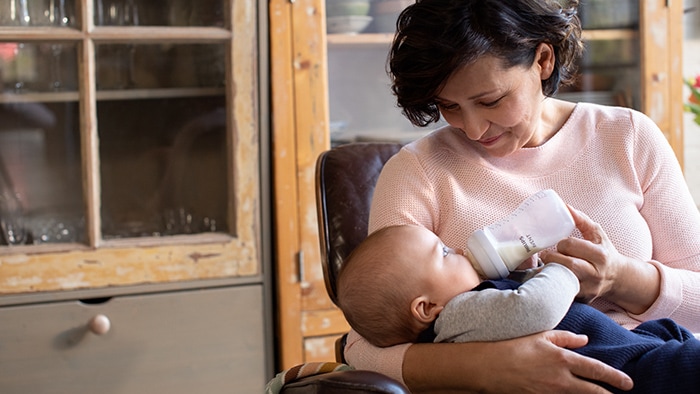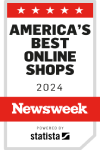Reading Time: 5 Min
How to introduce your breastfed baby to a Natural Response nipple
We’re big fans of breast milk because it has so many health benefits for babies. If you want to keep giving your baby the benefits of breastmilk when they’re not feeding at the breast, bottle feeding expressed milk with a Natural Response nipple is a great way to do it. It replicates the experience of breastfeeding. Here we explain how to offer your baby a bottle with a Natural Response nipple for the first time. It’s like trying anything new. With a little practice, they’ll soon get used to it!
Keeping it natural
The thing that makes a Natural Response nipple so much like the experience of breastfeeding is the way it flows. When your baby drinks at the breast, they’re using a natural drinking rhythm. It basically means they’re in control of the flow, applying suction and compression when they want to release milk, and pausing so they can swallow and breathe. Most traditional bottle nipples flow as soon as you tilt the bottle downwards. The Natural Response nipple works like a breast so it only releases milk when your baby uses suction and compression, when they stop to swallow and take a breath no milk flows , allowing them to use their natural drinking rhythm.
Offer the bottle mindfully
Offering your breastfed baby a bottle for the first time can feel a little daunting. What if they don’t take it? And how do you make it a positive experience? By using the Natural Response nipple, you’re already helping them make a smooth transition because it works like a breast. Additionally, we recommend taking these mindful steps:
What to do if your baby refuses
Heads up: It’s normal for babies not to feed well when you’re not home. They might also start waking more through the night. It’s frustrating, we know, but think of it as a transition period. Here are some tips to encourage your baby to take the bottle if at first you don’t succeed.
Signs you should change flow
Sometimes you might need to change nipple flow. It all comes down to the way your baby drinks rather than age. Enthusiastic drinkers tend to need a lower number flow. Slow and steady drinkers need a higher number flow.
You might need a higher flow if you see your baby struggling to get milk out or playing with the nipple. On the other hand, if you notice milk leaking from your baby’s mouth, or fast gulps, it could be a sign they need a lower flow rate.
Once you’ve found the right flow rate for your baby, you don’t need to change as they get older like you would a traditional nipple. As long as they’re calm and comfortable, there’s no need to step up the flow.
A final note on bottle feeding
Breastfeeding can take a little time to establish, so it’s good to wait until your baby is three to four weeks old before offering the first bottle. That said, we know that in the end it comes down to whatever works best for you and your little one. If you’re planning on returning to work, try to begin bottle feeding at least two weeks before your start date, so you can work through any challenges well ahead of time. With a little practice, your little one will get used to it.









